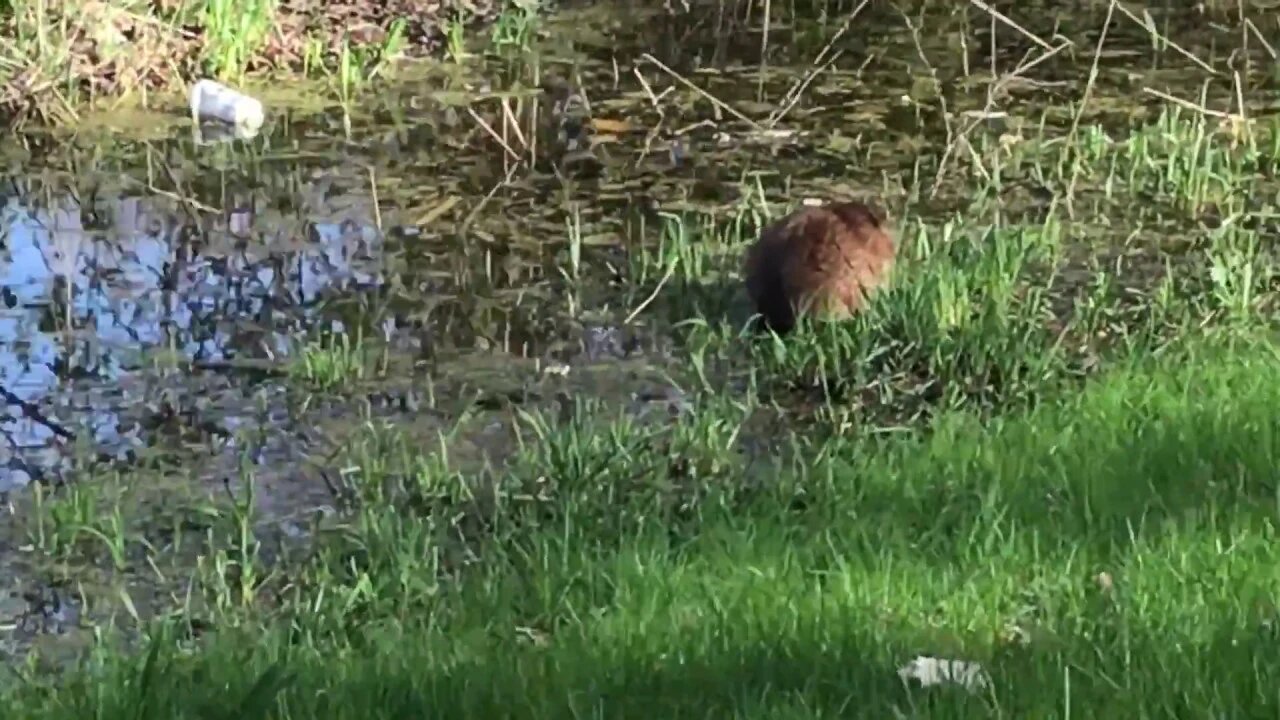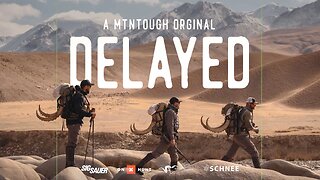Premium Only Content

A camera shy muskrat
Join this channel to help me bring you more vids...
https://www.youtube.com/channel/UCS-ix9RRO7OJdspbgaGOFiA/join
Join the free von Panda group here... https://panda-research-institute.mn.co
Get Peter von Panda gear here... https://petervonpanda.storenvy.com/
Instagram... https://www.instagram.com/petervonpanda/
As an Amazon Associate I earn from qualifying purchases.
Get muskrat merchandise here... http://geni.us/UjeXw
The muskrat (Ondatra zibethicus), the only species in genus Ondatra and tribe Ondatrini, is a medium-sized semiaquatic rodent native to North America, and is an introduced species in parts of Europe, Asia, and South America. The muskrat is found in wetlands over a wide range of climates and habitats. It has important effects on the ecology of wetlands,[2] and is a resource of food and fur for humans.
The muskrat is the largest species in the subfamily Arvicolinae, which includes 142 other species of rodents, mostly voles and lemmings. Muskrats are referred to as "rats" in a general sense because they are medium-sized rodents with an adaptable lifestyle and an omnivorous diet. They are not, however, members of the genus Rattus.
An adult muskrat is about 40–70 cm (16–28 in) long, half of that is the tail, and weighs from 0.6–2 kg (1.3–4.4 lb).[12] That is about four times the weight of the brown rat (Rattus norvegicus), though an adult muskrat is only slightly longer, and are almost certainly the largest and heaviest members of the diverse family Cricetidae, which includes all voles, lemmings, and most mice native to the Americas. Muskrats are much smaller than beavers (Castor canadensis), with which they often share their habitat.[5][6]
A muskrat skull
Muskrats are covered with short, thick fur which is medium to dark brown or black in color, with the belly a bit lighter (countershaded); as the age increases, it turns a partly gray in color. The fur has two layers, which helps protect them from the cold water. They have long tails covered with scales rather than hair, and to aid them in swimming, are slightly flattened vertically,[13] which is a shape that is unique to them.[14] When they walk on land, their tails drag on the ground, which makes their tracks easy to recognize.[5][6]
Muskrats spend much of their time in the water and are well suited for their semiaquatic life. They can swim under water for 12 to 17 minutes. Their bodies, like those of seals and whales, are less sensitive to the buildup of carbon dioxide than those of most other mammals. They can close off their ears to keep the water out. Their hind feet are semiwebbed, although in swimming, their tails are their main means of propulsion.[15]
-
 5:50
5:50
Peter von Panda
1 year agoThis Is Why These Airline Concept Seats Are Dumb
436 -
 LIVE
LIVE
Matt Kohrs
9 hours agoPumping To New Highs, Memecoin Mania & The Week Ahead || The MK Show
1,571 watching -
 LIVE
LIVE
BonginoReport
3 hours agoPothole Pete Blames Plane Crash in Canada on Trump (Ep.142) - 02/18/2025
11,157 watching -
 LIVE
LIVE
Wendy Bell Radio
4 hours agoCHECKMATE
9,911 watching -
 LIVE
LIVE
Graham Allen
2 hours agoDOGE Is Going After The IRS!! Mass Firing Soon!! + ANOTHER Plane Crash! We Are Not Safe…
5,163 watching -
 LIVE
LIVE
Chicks On The Right
3 hours agoCrazy plane crash, crazy lib protests, and Deborah Birx can suck it
1,998 watching -
 1:10:14
1:10:14
Game On!
16 hours ago $1.62 earnedPresident Trump's plan to Make the Super Bowl Great Again!
18.2K1 -
 1:00:33
1:00:33
inspirePlay
15 hours ago $2.86 earned🏌️♂️ 3 Joes vs 1 Pro Golfer – You Won’t Believe This Ending! 🤯🔥
37.8K1 -
 20:47
20:47
MTNTOUGH Fitness Lab
22 hours agoDELAYED: Kyrgyzstan Ibex Hunt | A MTNTOUGH Original
25.2K -
 59:50
59:50
Trumpet Daily
21 hours ago $6.04 earnedThe End of the Trans-Atlantic Alliance - Trumpet Daily LIVE | Feb. 17, 2025
21.8K21